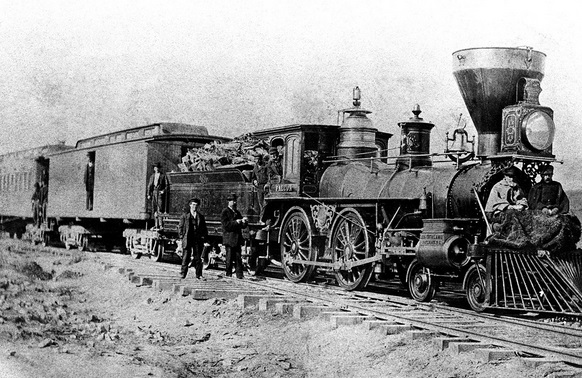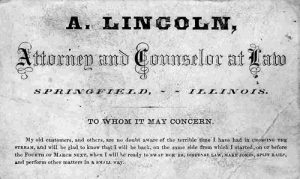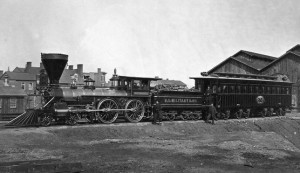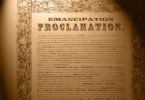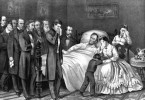In 1846 Lincoln was elected to the US Congress and took a two year leave from his law practice. At the end of his appointment in Congress Lincoln resumed his law practice with Herndon. He worked hard to reestablish his position as an attorney and in 1849 he was allowed to practice before the US Supreme Court.
At the beginning of the 1850s, while in partnership with Herndon, Lincoln started dealing with railroad cases and by the middle of the decade he was considered one of the most successful Illinois practitioners of railroad law. His first significant case was in 1851 representing Alton & Sangamon Railroad. Land owner James A. Barret refused to pay his pledge for his 30 shares of stock on the Alton & Sangamon railroad. The company had changed the planned route which affected the value of Barret’s land on which the railroad was to be built. The railroad retained Lincoln’s services and sued James Barret.
The importance of this case laid on the fact that others might stop payments on their pledges, depriving the company of funds and the public of the advantage of new railroad routes. Abraham Lincoln built his case proving that Barret was a stockholder of the company and that the Alton and Sangamon Railroad had the right to sue for delinquent payment. The Illinois Supreme Court accepted the lawyer’s argument which helped establish the principle that corporation charters could be amended in the face of public interest.
This first case established Lincoln as one of the most prominent practitioners of railroad law in the state of Illinois. In cases involving railroads Lincoln acted on behalf of whoever engaged his services. At times he represented railroads, other times their opponents.
The period from 1849 to 1854 was prosperous. Lincoln managed to rebuild his career and became a successful and sought after lawyer.
A military railroad used during the Civil War. Click on image to enlarge.

